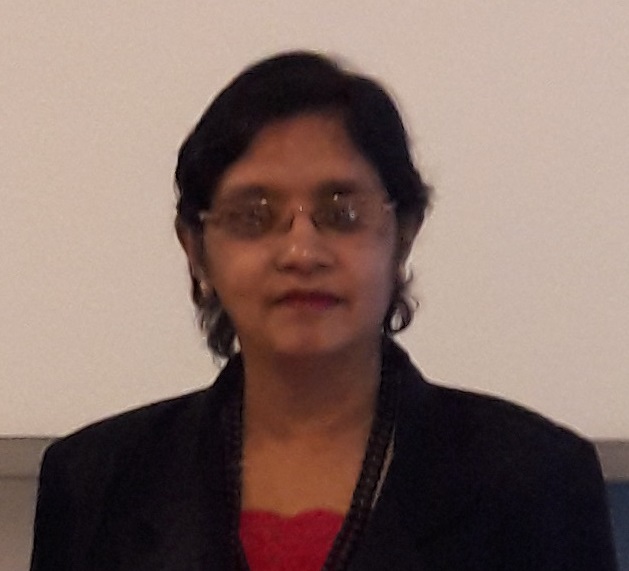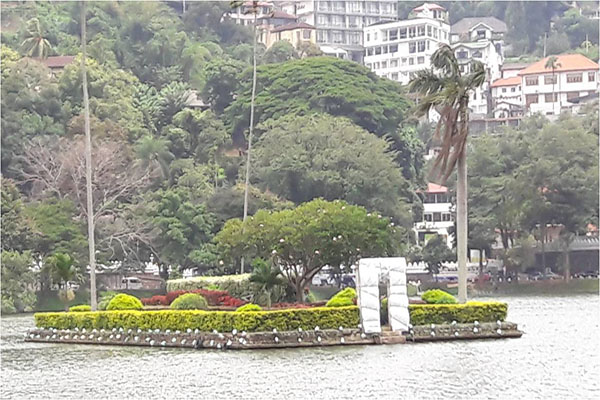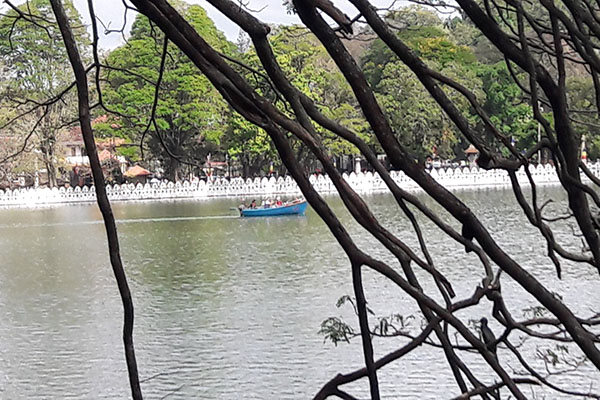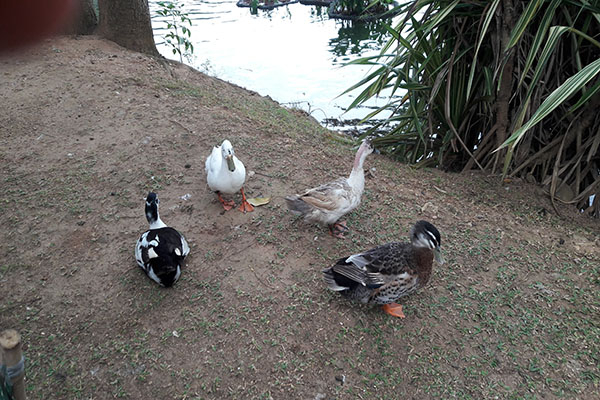Spectacular Kandy Lake – centerpiece of Kandy City
By Arundathie Abeysinghe
 Iconic Kandy Lake enhances the beauty of Kandy City with glistening waters during the day and illuminated waters with reflections of colorful lights of nearby buildings at night…Abundant with avifauna, schools of fish swimming near the surface of the Lake… Many species of aquatic life near the shores… Trees providing a shady atmosphere to the shores of the Lake, some with colorful flowers dotted with different species of birds perched on branches… Kandy Lake is the centerpiece and greatest attraction in Kandy City, Sri Lanka’s cultural capital…
Iconic Kandy Lake enhances the beauty of Kandy City with glistening waters during the day and illuminated waters with reflections of colorful lights of nearby buildings at night…Abundant with avifauna, schools of fish swimming near the surface of the Lake… Many species of aquatic life near the shores… Trees providing a shady atmosphere to the shores of the Lake, some with colorful flowers dotted with different species of birds perched on branches… Kandy Lake is the centerpiece and greatest attraction in Kandy City, Sri Lanka’s cultural capital…
Kandy Lake is considered as the heart and soul of Kandy City, an iconic and spectacular landmark because of its central location and the splendor it adds to the City. Kandy Lake and the island in its center with a few trees including palm trees have been featured in many picture post cards.
The white-colored clouds wall (walakulu bemma in Sinhala) on two sides of the Lake adds glamour to the spectacular lake. This ancient artificial lake is built overlooking the Temple of the Sacred Tooth Relic.
Kandy Lake is an artificial lake that was built in 1807 under the patronage of King Sri Wickrama Rajasinha (reign 1798 – 1815), the last ruler of the Kingdom of Kandy as well as Sri Lanka, to add glamour to Kandy City. Devendra Moolachariya is considered as the architect of Kandy Lake.

Kandy Lake also known as “Kiri Muhuda” (meaning Sea of Milk) was a stretch of paddy fields known as “Tigolwela” before the lake was constructed. As there was an exquisite pond known as “Kiri Muhuda” in the site of the former paddy field, once the lake was completed, it was also known as “Kiri Muhuda” by locals. According to folklore, the lake had also been called “Bogambara Wewa” (meaning lake in Bogambara) by locals.
Initially, a dam had been built under the patronage of King Sri Wickrama Rajasinha across the paddy field commencing from Paththitipuwa (octagon) of the Temple of the Sacred Tooth Relic. A roadway had been constructed across this dam for the king to visit *Malwattte Viharaya (Malwatte Temple). According to *Sir John D’Oyley, the dam was constructed between 1810 -1812. Steps leading to the lake from the Mahamaluwa (Great Terrace) of the Temple of the Sacred Tooth Relic are still visible.
There is a small island in the lake known as Diyatillake Mandapya. The King had used this place as the Royal Summer House for relaxation. According to legends, this place had also been used by the Queen and the King’s consorts for relaxation. During the British Colonial Era, the small building in the island had been used as an ammunition store.
King Sri Wickrama Rajasinha also added the Walakulu Bemma (the clouds wall) around the lake and it is 630 meters long. According to folklore, he could not complete the clouds wall around the entire lake as the kingdom was conquered by colonizers and the fall of the Kingdom. Walakulu Bemma is an intricate wall built to resemble floating clouds. There are triangular shaped holes in this wall (clouds wall) which were used in the past to place oil lamps that were lit on festival days.
The Malwatte Temple is situated overlooking Kandy Lake.
Queen’s Bathing Pavilion (Ulpenge in Sinhala) where the wives and concubines of King Sri Wickrama Rajasinghe had used for bathing is situated partly in the waters of Kandy Lake. When the British captured the Kandyan Kingdom, they added another storey to the Building and used it as a library.
The extent of the Lake is around 6545 square meters and the circumference is approximately three kilometers. The clouds wall measures approximately 634 meters.
A stroll around the Lake is considered a favorite past time of visitors to Kandy during day time and it is a favorite place of relaxation for city dwellers. The pathway of Kandy Lake is filled with people from all walks of life; local and foreign tourists admiring the breathtaking site as well as relaxing breathing in the cool mountain air; school children on their way home after school, Kandy dwellers going about their lives and pavement hawkers selling food and toys. Hence, the path around the lake adds joie de vivre to the location.
A favorite past time of visitors to Kandy City is going on a boat ride around the lake and feeding shoaling fish with pop corn that swarm near the wall of the clouds wall. The Lake is a sanctuary for fish. The trees around and above the Lake is a haven for many species of birds including kingfishers, cormorants and herons The Lake is a protected lake with fishing banned.

There is a small building near the clouds wall facing the small island where boats are parked and visitors can go on a boat ride hiring one of the boats and can sail in the lake towards the island although, access to the island is restricted. Yet, the breathtaking scenery above the lake surrounded by mountains and some buildings resembling fairy tale castles is very picturesque. The well-defined architecture of the Temple of the Sacred Tooth Relic and the golden canopy of the roof of the Temple are reflected on the still surface of the Lake, a breathtaking site.
According to legends, there is a tunnel which leads from the island of the Lake to the former Royal Palace of Kandy, situated within the premises of the Temple of the Sacred Tooth Relic to Malwatte Temple on the opposite bank and the circular well in front of the Malwatte Temple which had been used during the Kandyan Kingdom.

- Malwatte Temple – This temple is one of the two head temples of the *Siyam Nikaya sect of *Theravada Buddhism which holds the custodianship of the Temple of the sacred Tooth Relic.
- Sir John D’Oyley – The first Baronet (1774 – 1824) was a British Colonial Administrator. Sir John D’Oyly arrived in Sri Lanka (then Ceylon) in 1801. He held several important positions in the British Administration. When he served as President of Matara Provincial Council, he studied Buddhism and oriental languages under the distinguished scholar Venerable Karatota Nayake Thera. He maintained an enormous record of his official duties in a systematically written diary well-known as “D’Oyly’s Diary” which was discovered in Kandy *Kachcheri. At present, this diary is preserved in Kandy Museum. In 1917, this diary was first issued as a special publication by the Royal Asiatic Society (Ceylon Branch).
- Kachcheri – A Hindustani word initially used for the Revenue Collector’s Office during the early period of British Colonial Era in Sri Lanka (then Ceylon).
- Siyam Nikaya (Siyamopalior Siyam) is a Buddhist monastic order in Sri Lanka and named as Siyam Nikaya because it originated in Thailand (formerly known as the Kingdom of Siam). It is a leading Buddhist monastic fraternity and was founded by Venerable Upali Thera. The monastic order has two major divisions, Malwatta and Asgiriya. Malwatta and Asgiriya chapters have two separate Maha Nayakas (Chief Monks).
- Theravada Buddhism – This is a more conservative form of Buddhism (the other form is Mahayana Buddhism) which developed from Hinayana Buddhism (Sanskrit term literally meaning “small vehicle”). Hinayana is the name given by followers of Mahayana Buddhism to the more conservative school of early Buddhism. Theravada Buddhism is practiced in Sri Lanka, Myanmar (former Burma), Thailand, Cambodia and Laos.







